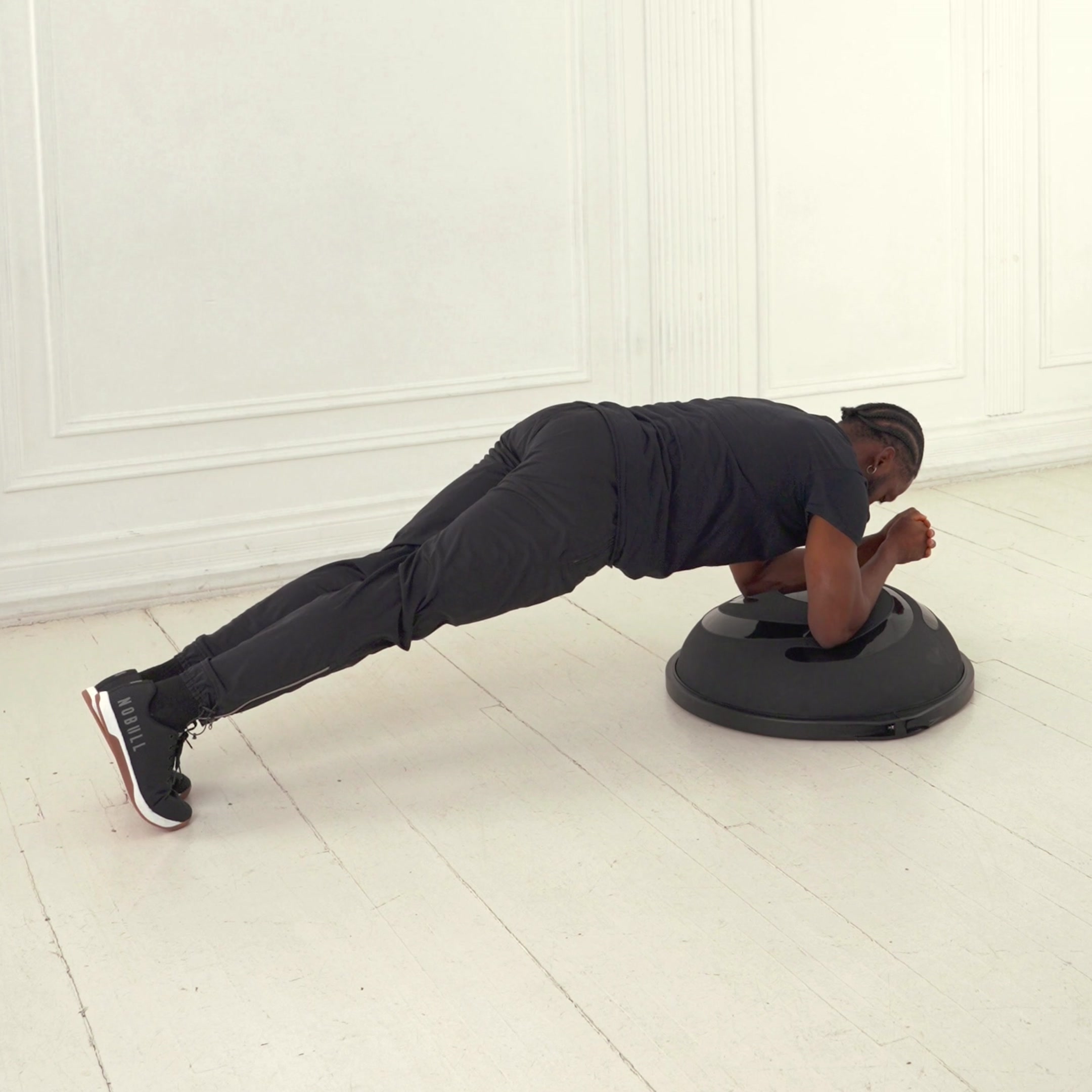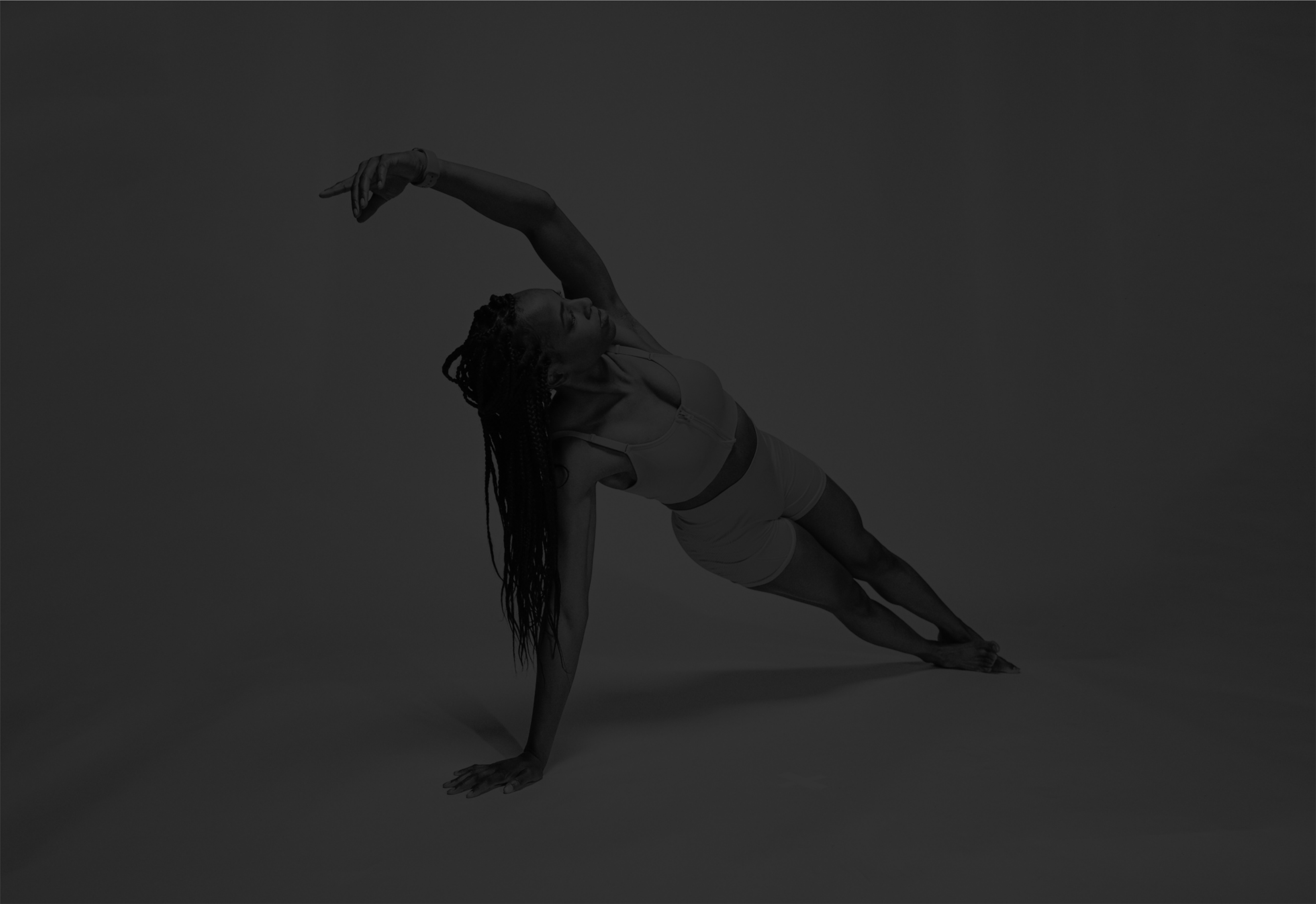Balance Trainer Stability Ball Knee Tucks
A dynamic plank variation using a balance trainer and stability ball that targets the core and hip flexors to build stability and anti-extension strength; enhances balance through unstable surfaces.
About Exercise
Equipment
Balance Trainer, Stability Ball
Difficulty
4/5 • Intermediate
Primary Muscle Groups
Abs, Hip Flexors
Secondary Muscles
Shoulders, Lower Back, Quads, Glutes
Popularity Score
4
Goals
Training Style
Setup Requirements
Requires Rack
No
Requires Bench
No
Requires Spotter
No
Space Needed
Medium
Noise Level
Low
Muscle Breakdown
View Muscle MapAbs
9/10Rectus Abdominis, Transverse Abdominis
Hip Flexors
8/10Iliopsoas
Obliques
7/10External Obliques
Shoulders
5/10Anterior Delts
Lower Back
4/10Erector Spinae
Quads
3/10Glutes
3/10Programming
Typical Rep Range
8-15 reps
Rest Between Sets
60-90 seconds
How to Perform
Place balance trainer dome-down on floor and position stability ball behind. Start in high plank with hands on balance trainer handles and shins on stability ball, body straight.
- Brace core and maintain neutral spine.
- Exhale and flex hips to tuck knees toward chest, rolling ball forward.
- Contract abs fully at tuck.
- Inhale and extend legs back to plank, controlling ball.
- Keep body aligned without sagging.
- Repeat for reps, staying controlled.
Coaching Tips
Form Cues
- Core tight
- Hips level
- Eyes forward
- Shoulders stable
- Controlled roll
- Neutral spine
Breathing
Inhale as you extend legs; exhale as you tuck knees and brace core.
Tempo
2-1-2
Range of Motion
Tuck knees until they align under torso; extend to full plank with legs straight and body straight from head to heels.
Safety
Safety Notes
- Ensure ball is properly inflated
- Stop if lower back or shoulder pain occurs
- Use controlled speed to avoid falls
- Avoid if acute back or shoulder issues
- Maintain core brace to protect spine
Spotting
Not recommended; self-limiting exercise focuses on control and stability.
Common Mistakes
- Hips sagging
- Arching lower back
- Rushing movement
- Ball slipping
- Shoulders shrugging
- Incomplete tuck
When to Avoid
- Acute lower back pain
- Shoulder instability
- Recent shoulder injury
- Disc issues
- Wrist pain
Flexibility Needed
- Shoulder flexion for plank
- Hip flexion range
- Ankle dorsiflexion for ball control
Build Up First
- Proficient plank hold
- Basic hip flexor strength
- Balance on unstable surfaces
Also known as
BOSU Stability Ball Knee Tucks, Balance Ball Knee Tucks on BOSU
Found this helpful?
Share your thoughts or help us improve this guide.
Similar Exercises
Balance Trainer Knee Tuck
Balance Trainer
Abs

Balance Trainer Plank
Balance Trainer
Abs
Balance Trainer High Knees
Balance Trainer
Hip Flexors, Quads

Balance Trainer Crunch
Balance Trainer
Abs

Balance Trainer Bird Dog
Balance Trainer
Abs
Balance Trainer Dead Bug
Balance Trainer
Abs

Balance Trainer Half Burpee
Balance Trainer
Quads, Glutes

Balance Trainer Plank Jacks
Balance Trainer
Abs

Balance Trainer Stability Ball Overhead Squats
Balance Trainer, Stability Ball
Quads

Balance Trainer Bicycle Crunch
Balance Trainer
Abs


subscribe to our newsletter
Contact Us
hello@trainfitness.aiFind Us
130 Spadina Avenue, Toronto,
Ontario, M5V 0H4, Canada
©2025 All Rights Reserved
